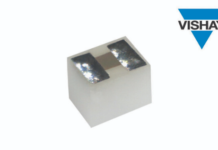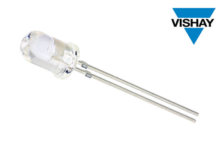China created the country’s largest chip maker last week, taking a giant step towards Beijing’s plan of becoming less reliant on foreign technology.
Under the government’s direction, Tsinghua Unigroup, China’s largest chip designer, acquired a majority stake in XMC, one of China’s leading chip makers and backed by the national semiconductor fund, the Wall Street Journal reported. A new holding company was created for XMC called Yangtze River Storage Technology, which has a registered capital of 18.9 billion yuan ($2.8 billion).
Yangtze combines Tsinghua Unigroup’s investment power and XMC’s engineering team, said Roger Sheng, a Shanghai-based research director for semiconductors at Gartner IT -0.75%, adding that the merger is the first case between two Chinese companies in the semiconductor industry.
China imports around $200 billion of chips a year, which is the biggest trade deficit in the global semiconductor market, according to state-run Xinhua news agency. The creation of Yangtze would benefit the country in the long run, but it will first have a negative impact on its smaller domestic players, said Sheng.
“Currently, I think other Chinese companies that want to invest in the memory business are most impacted because the new company will get the most resources and support from the Chinese government,” he said. “The other companies or regional governments can’t get as big an investment as Yangtze.”
Global chip makers are safe for a few years, with Yangtze needing at least two to three years to get commercialization capability, unless Tsinghua Unigroup can acquire companies with current mainstream 3D NAND (next-generation flash memory chips) or DRAM (computer memory chips), said Sheng.
XMC, however, is developing today’s leading-edge 3D NAND chips to be test-ready by the end of this year, said Hui He, a senior analyst for China’s semiconductor market at IHS IHS +% Technology. The company will have more advanced chips for initial mass production scheduled for the first half of 2018, she said.
After the proven product ramp-up period, “all global memory vendors will be affected,” said Gartner’s Sheng. “Chinese companies could own the market with proven product manufacturing capabilities. It will definitely impact existing market players through cheaper and volume product supply.”
Some of the global chip makers whose market shares will be affected are South Korea’s SK Hynix , Japan’s Toshiba (which has a flash memory partnership with SanDisk SNDK +%), U.S.’s Micron (which Tsinghua Unigroup tried and failed to buy for $23 billion because of national security risk), as well as Intel INTC +0.16%, which has a plant in Dalian, China, that started 3D NAND production just last month, said IHS’ Hui.
Samsung, which released its earnings for the second quarter last week and said it expects its semiconductor business to drive the conglomerate’s profit next year, will also be affected.
XMC is currently the only Chinese enterprise working on 3D NAND technology, and will be able to ship some products to the market with Tsinghua Unigroup’s capital support up until 2020, said Hui. By 2030, XMC targets to be a tier-one 3D NAND supplier, she added.
Though China’s Yangtze chip giant has the investment power and engineering team to improve the country’s memory technology, “the biggest obstacle of the Chinese memory industry is still how to get matured memory technologies from major memory players,” said Gartner’s Sheng. “Thus, before the next merger or acquisition or technology license happens, it only demonstrates that Chinese government wants to focus on the memory industry development, as we had already known.”
Source:http://www.forbes.com/















